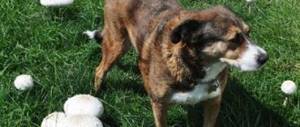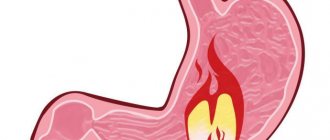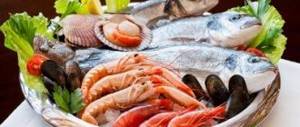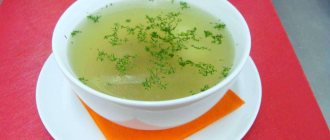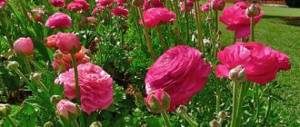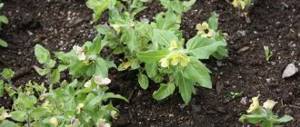Those who like to hunt with bladed throwing weapons: hunting crossbows and bows need to know some nuances, without which this type of hunting can, in some cases, become ineffective. St. John's hunters who use throwing bladed weapons are well aware of all the pros and cons of hunting with a crossbow or bow. A silent shot and an unafraid animal are a clear advantage of crossbow hunting. But, naturally, the power of destruction and the range to the target make the crossbow, compared to firearms, an outright disadvantage. But that's not all. An arrow can only kill small game, such as a hare or black grouse. You cannot kill a wild boar or an elk (there is no talk of a bear at all) with an arrow. Unless, of course, you hit such vital organs that the animal will “quickly” bleed out and throw off its hooves in a couple of days. A large animal, having received an arrow in the side, will make its legs and, if the hunter does not continue to pursue it, waiting a week for the “meat” to die and, if possible, firing another bolt at it, then the animal may well recover from the wound. And even the most stubborn tracker can be left with his nose, chasing a wounded animal for a long time, and, in the end, giving up on this idea, he will go hunting for hares. But there is a way out. True, this solution applies more to hunters who slaughter an animal for its skin, and not for eating.
What plant can poison be prepared from?
Since ancient times, hunters have used various poisons to hunt large animals. Today we will talk about preparing one of these poisons. A poisonous decoction that can kill an animal within a few minutes, even if its injury is minor, can be made from hellebore root. This highly poisonous plant has several varieties and grows almost all over the world.
Here we describe a method for preparing a poisonous decoction of white hellebore, which usually grows in wet meadows, near springs, livestock pastures, grass swamps, in light forests, and is most often found in the mid-mountain and alpine zones of the mountains in Western and Central Europe.
In Russia you can more often find black hellebore (it grows in the European part of Russia, Siberia, and the Far East)
and hellebore (grows in the wet meadows of the Far East and Siberia).
I think the technology for preparing poison from “Russian hellebore” will not differ from the hellebore of the Alpine mountains described below.
The plant is usually harvested in the month of August, when it is most toxic. To prepare a poisonous decoction, small roots that are dark in color or yellowed are selected.
General assistance for poisoning
- Avoid human exposure to poison. Find out the cause of the poisoning.
- Drink plenty of fluids.
- Give activated charcoal if possible.
- Call for medical help immediately. Life can count in minutes !
The natural world has thought of everything long ago.
To protect themselves and ensure survival, not only animals, but also plants are endowed with the ability to self-preserve. That is why many of them are fraught with danger, a threat to human life. Humanity uses some of these poisons for humane purposes, makes medicines, and uses them in medicine as anesthesia. Some became assistants in wars and crime.
To survive and know what measures to take in case of poisoning, you should carefully study the plant poisons that are easily accessible in your country, city, or street.
Adults and children, not knowing what danger this or that plant poses, can accidentally become poisoned by a fruit or seed. Be careful, take care of yourself!
Technology for preparing poison from hellebore
The poison is prepared as follows. Hellebore roots are cleaned from the soil and washed well. Then they need to be placed under some kind of press to squeeze out the juice. This juice is collected in a metal container and boiled. When boiling hellebore juice, foam and gluten appear on the surface, which must be removed with a spoon. After this, the liquid must be filtered and left to infuse in the sun (from sunrise to sunset). This process must be repeated for three to four days. Each time, hellebore juice must be filtered. This is done until it becomes thick and resembles sugar syrup in color. If, after sniffing this syrup, you start to sneeze, then the poison is ready.
When preparing poison from hellebore, you can simply evaporate its juice rather than leaving it in the sun, but in this case, the decoction will be less toxic. You can test the effect of the poison on chickens. This is done as follows. Take a thread and a needle. The thread is moistened with the prepared poison. Then we pass it between the skin and muscle tissue of the chicken's foot until blood comes out. After a minute, the chicken should “fall asleep.”
The most dangerous plant poisons
Many plants contain a huge amount of organic compounds that affect the functioning of internal organs in various ways. For several centuries they have been actively used to prepare healing decoctions and infusions. Modern pharmacology also studies the properties of herbs, creating unique drugs based on them to treat pain, inflammation and infections.
The most dangerous plant poisons with which you should be extremely careful:
- Ricin. When released into the blood, it disrupts the production of proteins. The victim experiences liver and kidney dysfunction, and respiratory function deteriorates. Without help, death occurs within 2–3 days.
- Amatoxin. The plant toxin accumulates in the liver tissue, affects the heart muscles, leading to their paralysis. Does not collapse during heat treatment. It provokes tissue necrosis and is practically not excreted in the urine.
- Curare. A substance of plant origin has paralyzing properties, blocking the functioning of the muscular system. A person stops breathing and can die from suffocation in just a few minutes.
- Muscarine. The lethal dose for an adult is only 3 mg. The substance affects the production of glandular secretions, the functioning of the digestive system is disrupted, the mucous membranes dry out, and the temperature rises. The problem occurs at the level of brain receptors.
- Quinine. When poison is consumed, blood clots form in the vessels, increasing the risk of hyperthermia of the heart muscle. At a dosage of 8–10 mg, the kidneys stop working and toxic substances are not excreted in the liquid. If the pancreas is damaged, the patient dies from hypoglycemia.
- Konyin. The plant poison has a powerful paralytic effect and affects the human nervous system. Leads to the destruction of the protein that makes up all the cells of the body. Death occurs with the introduction of 0.5–1 g of toxin.
- Hydrocyanic acid. When poison enters the blood, tissue oxygen starvation quickly develops and vital processes stop. The cause of death is cerebral edema and suffocation.
The natural poisons of plant origin listed above are among the ten most dangerous substances for humans . In addition to them, there is a group of organic compounds that, when consumed, cause mild poisoning, impair digestion, and damage mucous membranes. These include solanine, aconitine, hypaconitine, and furocoumarin. They have the ability to accumulate in the tissues of the liver and spleen, worsen the condition of the blood, but are not capable of instantly killing a person. Useful article: what you need to know if you are poisoned by wolfberry.
How to help?
The most important thing is not to panic and try to arrange a meeting between the victim and doctors as quickly as possible. If it is impossible to call emergency services for some reason, it is necessary to provide first aid on the spot and independently deliver the poisoned person to the nearest medical center.
How to deal with skin burns from poisonous plants
It is necessary to wash the burned skin as thoroughly as possible.
In case of contact of sap or pollen of a dangerous plant with the skin, you must:
- Get rid of clothing that may have gotten sap or pollen from the plant to avoid additional contact with the hazardous substance.
- Rinse the affected area with plenty of running water as quickly as possible. If there is no tap, bottles of water and “civilization” in general at hand, any moisture will do - from a river, lake, swamp, or even the nearest puddle.
- It is advisable to treat the burned skin with a soap solution after washing.
- After this, you need to carefully blot the damaged area with a clean cloth, but under no circumstances rub.
- Apply a local antiallergic agent to the skin - ointment, cream or spray.
- If the burn is extensive, you can give the victim a general antihistamine.
ATTENTION! It is not necessary to apply a bandage, but if there is a risk of the affected area coming into contact with dirt, dust or other potentially harmful additional contaminants, you can cover the burn area with a clean cloth.
What to do if poison gets into the stomach
In nature, in the countryside and when traveling, you need to pay special attention to children.
First aid for poisoning from poisonous plants in case of ingestion should be provided immediately. The less time passes from the moment toxins enter the esophagus and gastrointestinal tract, the greater the chance of preventing the complete absorption of dangerous substances into the walls of the stomach and into the bloodstream.
What to do:
- Inspect the oral cavity: if there are plant remains there, you need to remove them and rinse your mouth.
- If less than 30 minutes have passed since the fruit or other part of a poisonous plant was ingested, induce vomiting as quickly as possible. To do this, the victim needs to drink several glasses of water and, using the “two fingers in the mouth” technique, provoke vomiting.
- After gastric lavage, it is very advisable to take some sorbent. The most common option, the price of which allows you to keep it in your medicine cabinet at all times, is activated carbon. And not one or two tablets, but at the rate of 1 gram per kilogram of weight, especially if the poisoning affected a child.
- While waiting for medical help or on the way to the hospital, you need to drink. The liquid will reduce the rate of absorption of the poison and help the body control its water balance after vomiting. You can drink tea, still mineral water, milk. And even better - oral rehydration solutions like Regidron.
- Be sure to show rescuers or doctors the plant or its remains that caused the poisoning. Or take it with you, being careful not to touch it with your hands and carefully wrapping it in cloth or paper.
ATTENTION! Under no circumstances should you induce vomiting in an unconscious person!
If the victim does not respond to treatment and physical touch, it is necessary to place him in a stable position on his right side and carefully monitor the pulse rate and quality of breathing. If the heart rate slows down and breathing weakens, you need to be prepared to begin resuscitation measures and continue them until doctors arrive.
It is also strictly forbidden to:
- Try to neutralize plant poison with alcohol, acids, alkalis and any other aggressive liquids.
- Use decoctions, infusions and extracts of any herbs as a drink.
- Give the victim any medications, with the exception of cardiac drugs, if the poisoned person has a specific disease of this system.
- Apply a tight bandage to the burn site, smear the affected area with oil, healing ointment, moisturizing and anti-burn creams.
IMPORTANT! If the plant juice gets into your eyes, they, like your skin, should be thoroughly rinsed with running water, preferably clean tap, bottled or spring water. You don’t need to do anything else with your eyes yourself.
Classification of plant poisonings
There are many classifications. The most used is based on the plant’s ability to act on one or another body system. According to this type, all poisonous plants are divided into several types.
Neurotropic - primarily affects the central nervous system. Such plants include henbane, belladonna, horsetail, datura, containing scopolamine, atropine, hyoscyamine. They disrupt the transmission of nerve impulses at synapses - this leads to paralysis of the respiratory center and corresponding muscles.
Hepatotropic - liver cells suffer with the subsequent development of liver failure. This can be caused by heliotrope, comfrey, and ragwort. They contain hepatotoxic substances: cynoglossin, heliotropin.
Cardiotropic - contain cardiac glycosides, which in large dosages have a negative effect on the cardiovascular system. In small doses they do not cause harm and are used as medicines.
Dermatotropic – acting on the skin and causing mainly burns and contact dermatitis. These include hogweed, wolf's bast and caustic buttercup. If more than 30%-40% of the body surface is damaged, death is possible.
Mixed - they affect several systems of the body: these are bitter nightshade, aconite. More often than others, the central nervous system, cardiovascular, excretory system and gastrointestinal tract are affected.
